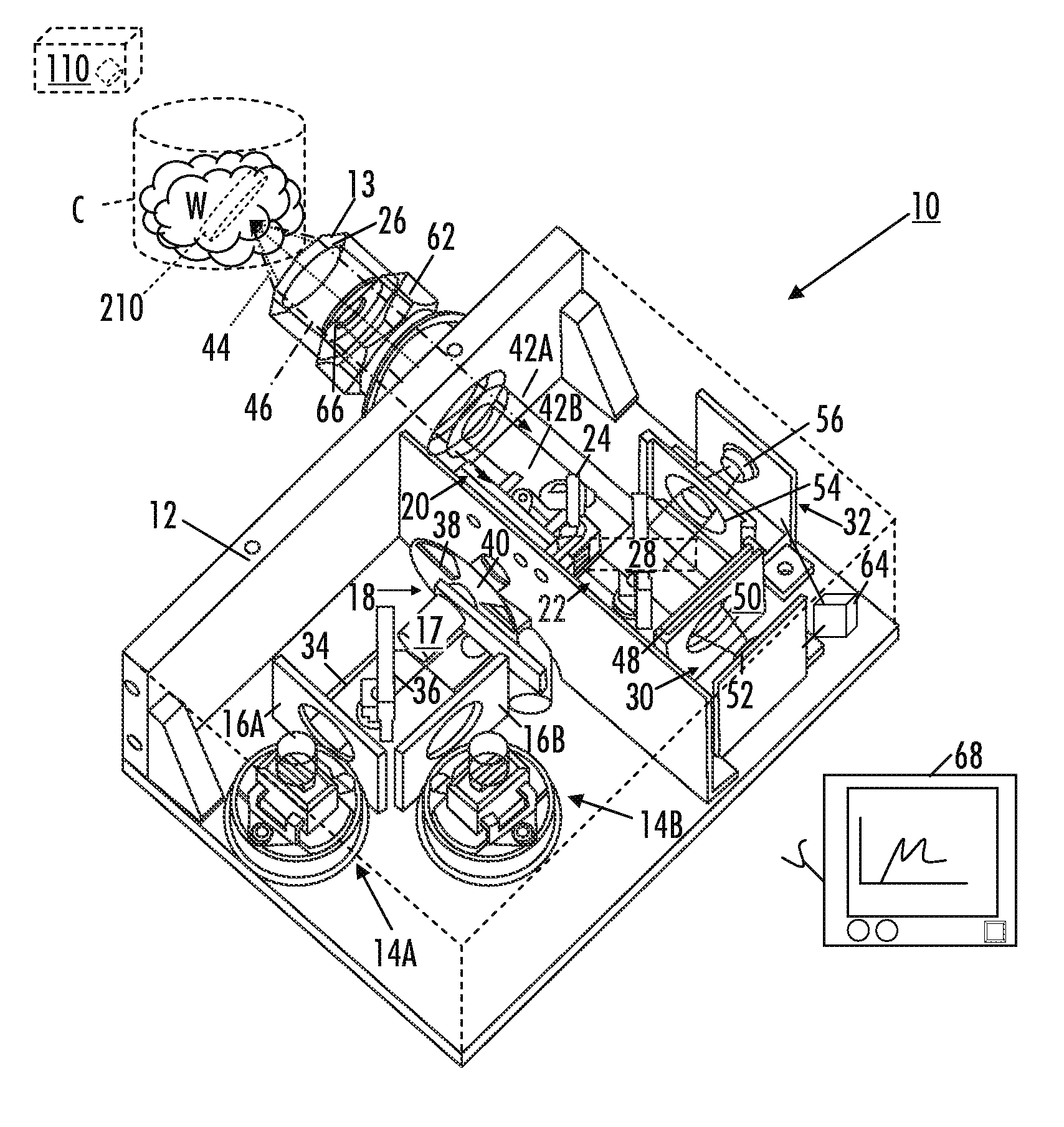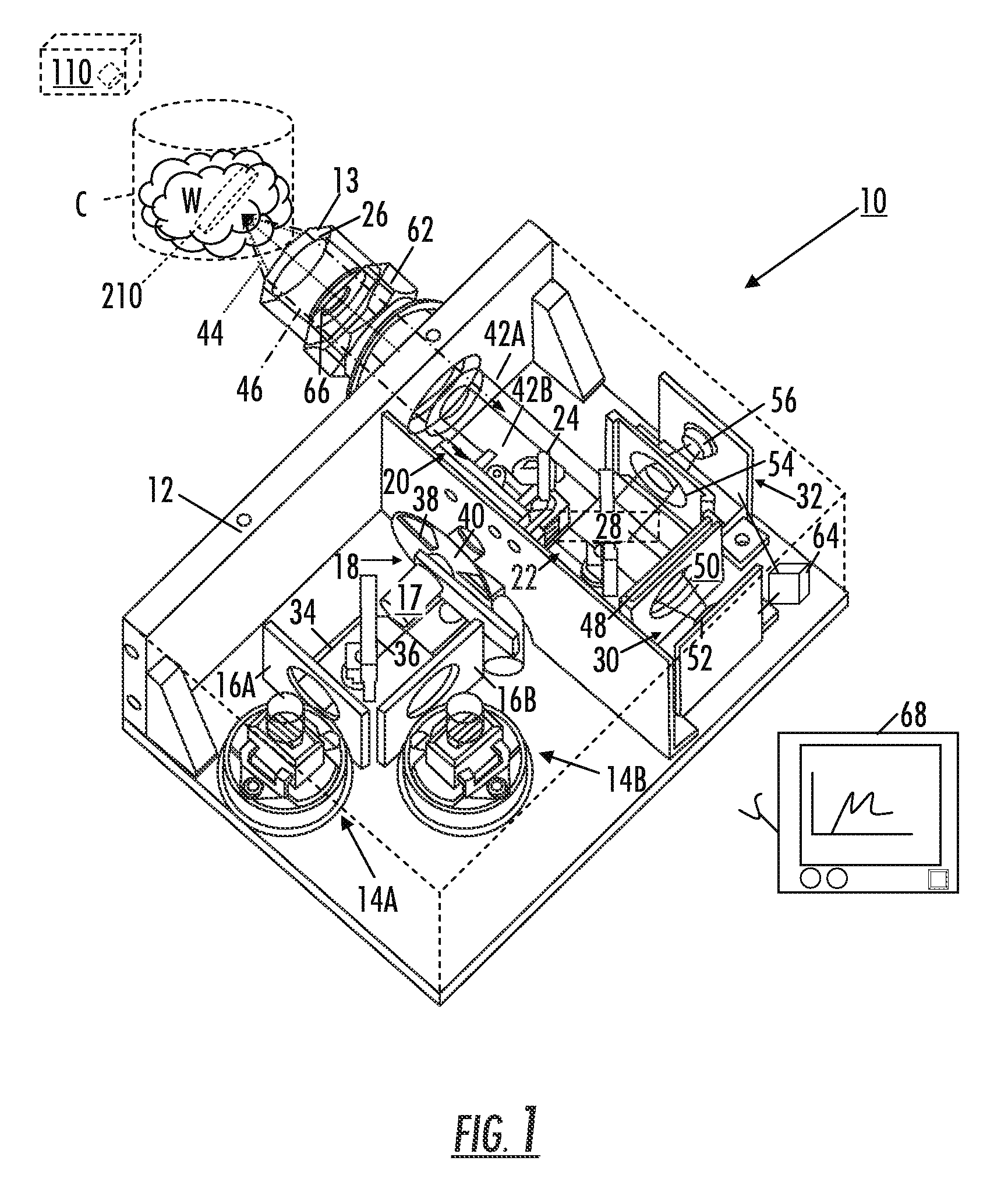Self-contained multivariate optical computing and analysis system
a multi-variate, self-contained technology, applied in the direction of optical radiation measurement, instruments, spectrometry/spectrophotometry/monochromators, etc., can solve the problems of unacceptably inaccurate estimates, inability to adequately measure the data relating to one, and difficult to convert simple light intensity measurement to information, etc., to achieve simple and economical manufacture, assemble and use, and reduce information noise. , the effect of increasing the precision of measuremen
- Summary
- Abstract
- Description
- Claims
- Application Information
AI Technical Summary
Benefits of technology
Problems solved by technology
Method used
Image
Examples
example i
System I
[0104]A system similar to the optical analysis system 10 shown in the figures was constructed and used to make static measurements on aspirin / lactose.
[0105]System I Components:
Illumination: 20 W Gilway lamp
Spectral elements: 5 mm D2O, 5 mm Germanium
Optical window: none
Detector: PbS detector from New England Photoconductor
MOE: specific to test conditions.
[0106]Procedure and Results of Static Testing Using System I:
[0107]A powdered sample with a known composition was placed in a dish and the system light beam was focused on the powder. The output of the detectors was monitored and recorded. Aspirin / lactose samples covering the range of 100% aspirin to 100% lactose were tested.
example ii
System II
[0108]A system similar to the optical analysis system 10 shown in the figures was constructed and used to make dynamic measurements on aspirin / lactose.
[0109]System II Components:
Illumination: 20 W Gilway lamp
Spectral elements: 5 mm D2O, 5 mm Germanium
Optical window: sapphire window
Detector: PbS detector from New England Photoconductor
MOE: specific to test conditions.
[0110]Procedure and Results of Dynamic Testing Using System II:
[0111]The Aspirin / Lactose testing was made on a mixer bowl containing lactose and the system measured as aspirin was added to the system and mixed. Specifically, lactose powder was placed in the bowl of a mixer and the measurement system was attached the bowl using a Swagelok® brand fitting. A sapphire window was used to contain the powder in the bowl and allow the system to interrogate the powder. With the mixer turning, known amounts of aspirin were added and the system output signal was monitored and recorded. Aspirin was added in several allotmen...
example iii
System III
[0112]A system similar to the optical analysis system 10 shown in the figures was constructed and used to make static measurements on aspirin / lactose.
[0113]System III Components:
Illumination: 5 W Gilway lamp
Spectral elements: 5 mm D2O, 5 mm Germanium
Optical window: none
Detector: PbS detector from New England Photoconductor
MOE: specific to test conditions.
[0114]Procedure and Results of Dynamic Testing Using System III:
PUM
 Login to View More
Login to View More Abstract
Description
Claims
Application Information
 Login to View More
Login to View More - R&D
- Intellectual Property
- Life Sciences
- Materials
- Tech Scout
- Unparalleled Data Quality
- Higher Quality Content
- 60% Fewer Hallucinations
Browse by: Latest US Patents, China's latest patents, Technical Efficacy Thesaurus, Application Domain, Technology Topic, Popular Technical Reports.
© 2025 PatSnap. All rights reserved.Legal|Privacy policy|Modern Slavery Act Transparency Statement|Sitemap|About US| Contact US: help@patsnap.com



